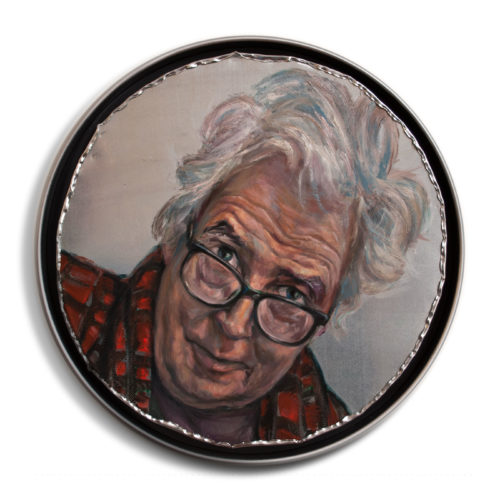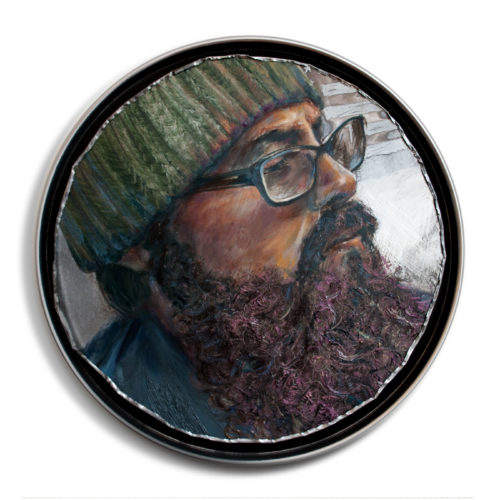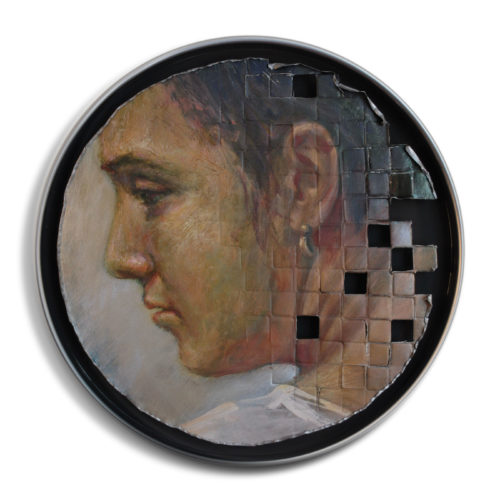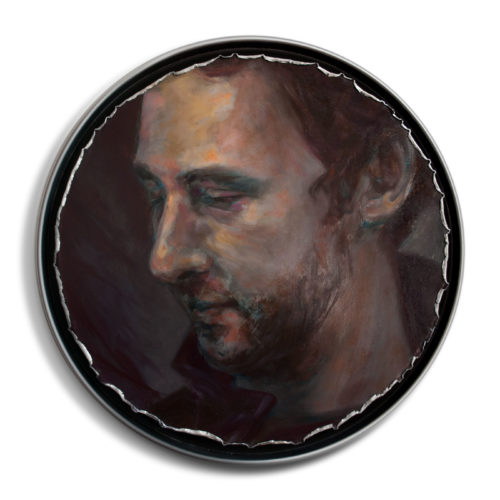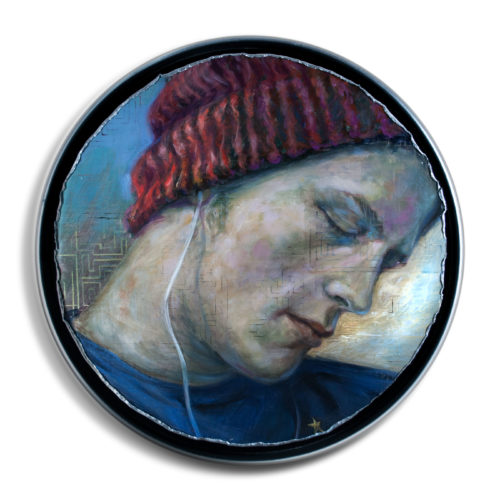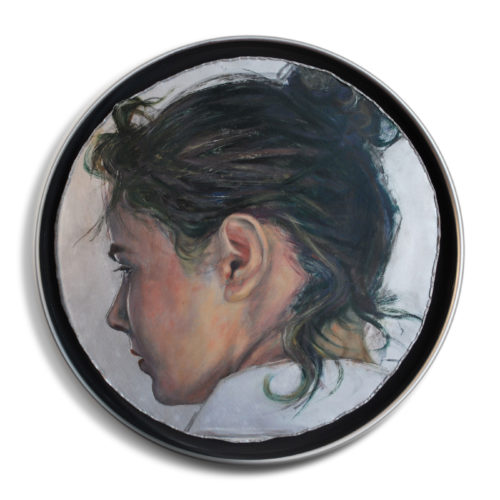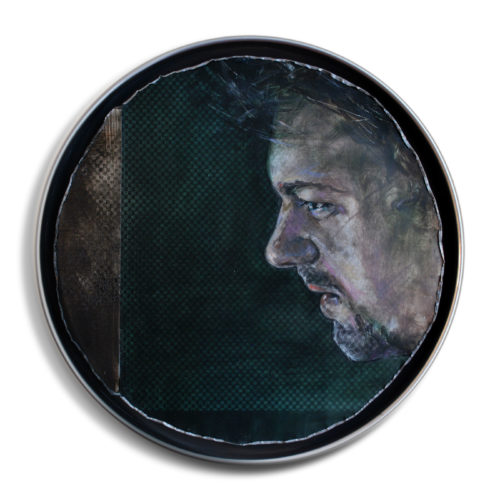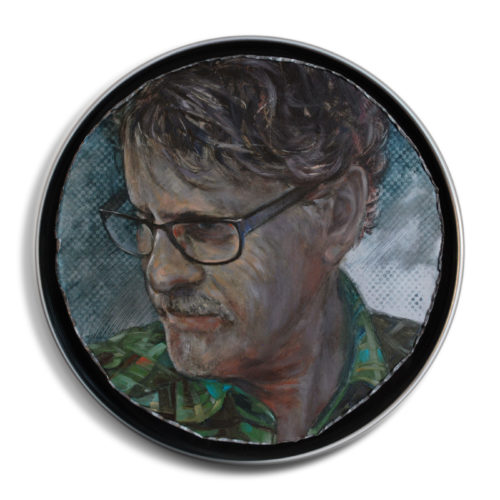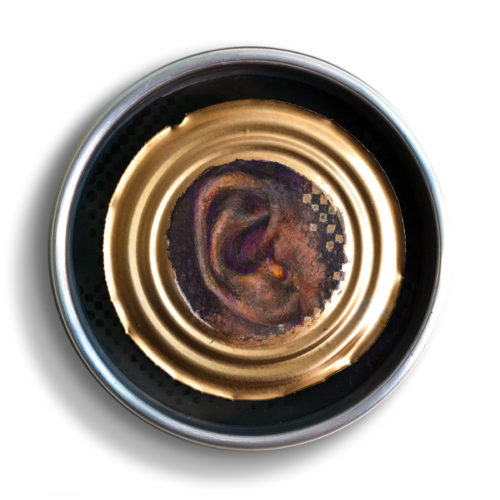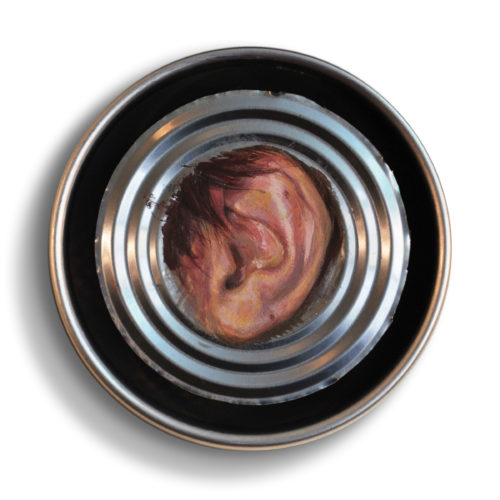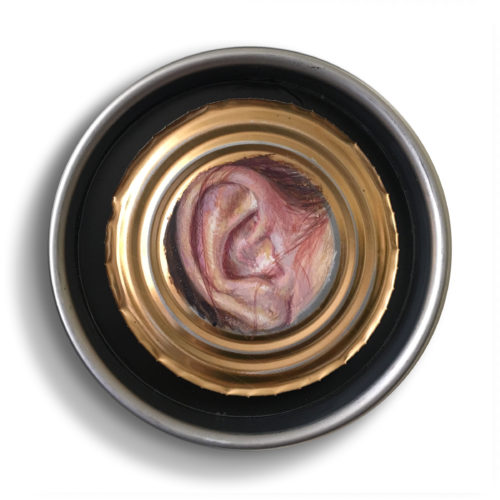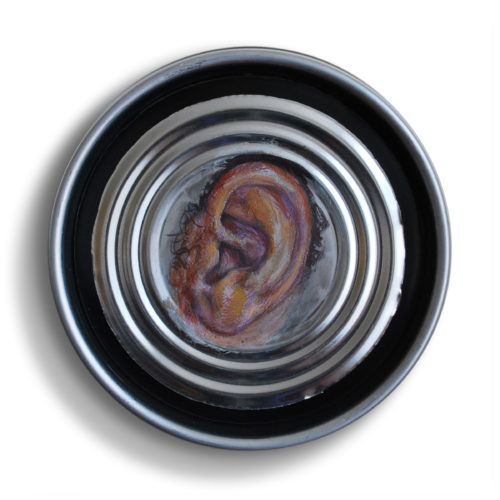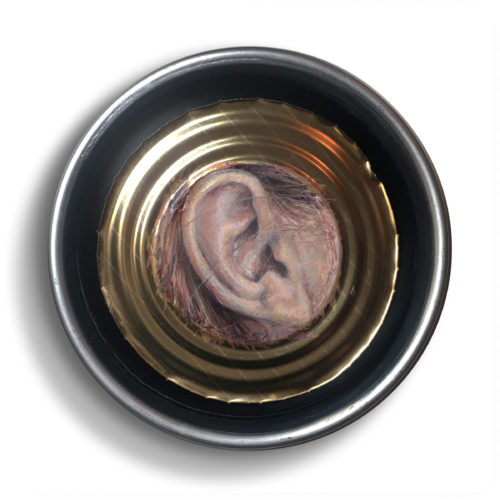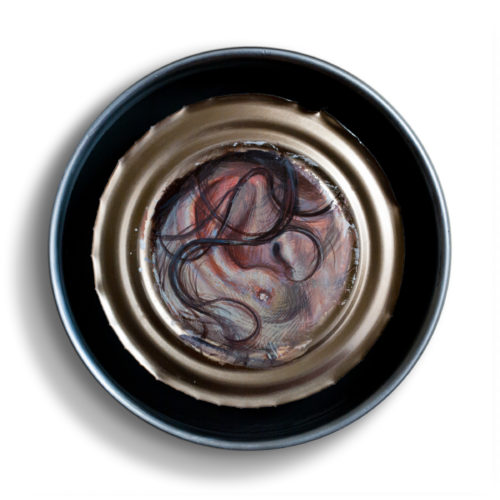
An abusively alliterative appellation for these works could be “the tenuous tether of taut twine and tin cans“. It’s a reference to an early technology most of us used as kids, struggling to hear the person on the other end of the line. Whether it’s a tin can or Zoom, we’re still frustrated when the line drops in slack silence.
The ear paintings are painted on can lids and the larger portraits are cut to reference a lid’s jagged circumference. The metal is serrated, suggesting that we’re not entirely safe. Technology facilitates a certain communication, however incomplete. In text, the nonverbal is immediately out. Voice calls lack body language. All these are in want of a shared context with the other person. It’s that shared context that I’m interested in; it’s empathy really.
A painting is an object. Whatever is represented, symbolized, or alluded to, the painting itself is a thing and not simply an image. Within this body of work, I am consciously addressing the topography of the painted surface, from paint that is barely a patina on the metal to impasto. The support itself may also be deconstructed and bent, with pieces chiseled out. Much of the narrative payload is delivered through the mode of presentation. There is a violence inflicted upon these profiles. The paint does more than describe form and physiognomy, it becomes an analog for the human. Mechanical pixelation does not simply disintegrate an image, it damages the paint. There is real loss.

laser engraving paint 
Implements of Destruction 
kill your darlings 


